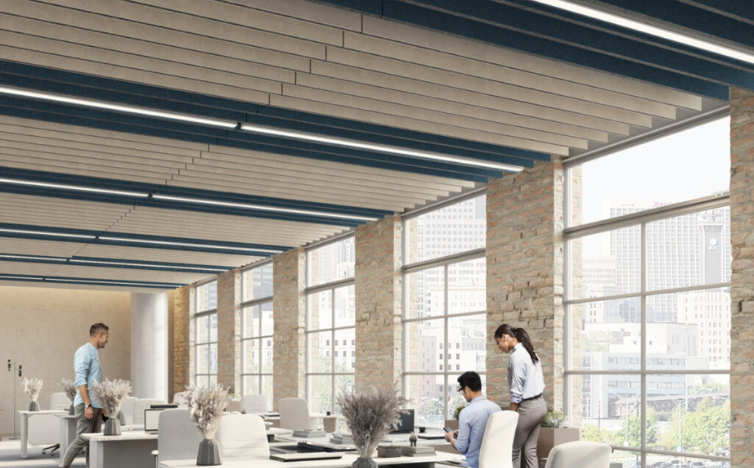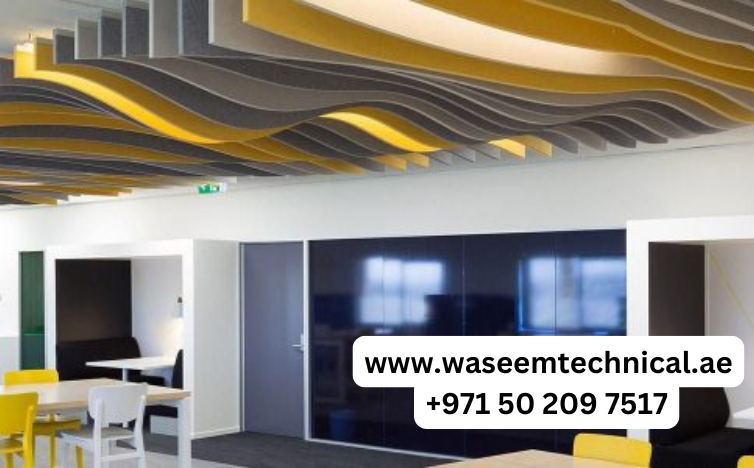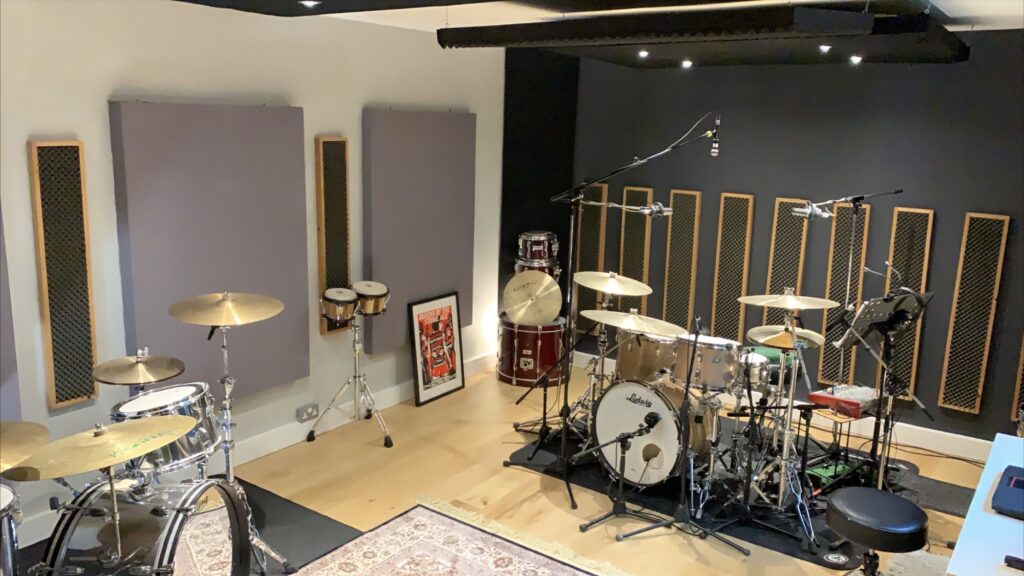Acoustic baffles have moved beyond their purely functional roots, now serving as both an aesthetic feature and a key sound management tool in modern design. This article delves into how these elements combine beauty and functionality to create spaces that are both visually appealing and acoustically optimized.
What Are Acoustic Baffles?
Acoustic baffles are panels or structures suspended from ceilings, designed to absorb sound and reduce noise levels. Often found in public areas with high ceilings, such as open offices, auditoriums, and commercial spaces, baffles effectively minimize sound reflections and improve overall room acoustics. Made from various materials, including foam, fabric, and even sustainable options, they come in diverse shapes, colors, and textures, contributing to a space’s visual appeal while reducing noise.
The Role of Acoustic Baffles in Modern Interior Design
Acoustic baffles are becoming a staple in contemporary design for multiple reasons:
- Noise Control: Baffles are especially beneficial in open layouts where noise can become a significant distraction. Their strategic placement helps maintain sound clarity and reduces echoing.
- Aesthetic Appeal: Acoustic baffles can be customized to suit different design styles, offering a visually pleasing way to manage sound in a room.
- Spatial Zoning: Baffles can visually separate sections within open areas, subtly defining spaces without the need for walls or partitions.
In modern interiors, these elements contribute to a balanced environment, ensuring that form meets function effectively.
Key Aesthetic Features of Acoustic Baffles
Acoustic baffles are crafted to suit a range of design preferences and architectural styles. Below are a few of the primary features that contribute to their aesthetic appeal:

- Variety in Shapes and Sizes: From rectangular panels to circular forms and other unique designs, baffles can add a layer of creativity to a room’s ceiling. The choice of shape often complements the layout and theme of the space.
- Color Options: Baffles are available in numerous colors, enabling designers to match or contrast with existing decor. Neutral tones blend seamlessly into ceilings, while bold colors create striking accents.
- Texture and Material Choices: Different materials, such as felt, fabric, or wood, add texture and character. Selecting materials that complement the room’s furnishings or flooring brings a sense of cohesion.
These features make acoustic baffles both a functional and decorative element in modern spaces.
See Also: Vertical vs Horizontal Baffles: Which Is Right for You?
How Acoustic Baffles Enhance the Ambiance of Modern Spaces
The integration of acoustic baffles doesn’t just reduce noise; it shapes the ambiance and usability of a room. In a bustling restaurant, for instance, they create a more intimate dining experience by dampening background noise. In offices, they support productivity by fostering a quieter work environment. In both cases, acoustic baffles elevate the aesthetic experience, blending seamlessly with lighting fixtures, furnishings, and other design elements.
By controlling reverberation and echo, baffles contribute to an overall sense of calm, creating an inviting and professional atmosphere.
Types of Acoustic Baffles and Their Applications
Modern acoustic baffles are as versatile in application as they are in design:
- Hanging Acoustic Baffles: Suspended from ceilings, these are ideal for large spaces, breaking up sound waves and adding dimension to high ceilings.
- Wall-Mounted Baffles: Wall-mounted designs are perfect for areas where ceiling suspension is impractical. These can double as artwork and bring texture to blank walls.
- Modular Baffles: These customizable, movable baffles allow designers to adapt the soundscape as needed, making them suitable for multipurpose rooms and evolving layouts.
Each type offers unique aesthetic and acoustic benefits, giving designers flexibility in balancing noise control with visual harmony.
Advantages of Acoustic Baffles in Modern Design
In addition to their core function of managing sound, acoustic baffles offer several design advantages:
- Flexibility in Placement: Baffles can be placed in various configurations, allowing designers to adapt them to different room shapes and needs.
- Customization Options: With endless possibilities in terms of material, shape, and color, baffles can be tailored to specific design visions, enhancing a room’s personality.
- Eco-Friendly Options: Many acoustic baffles are now crafted from sustainable or recycled materials, appealing to eco-conscious designers and clients.
These advantages make acoustic baffles an excellent addition to any modern space, where aesthetics and function are equally valued.
Tips for Incorporating Acoustic Baffles into Your Design
To make the most of acoustic baffles, consider these tips:
- Plan Around Lighting and Ventilation: Ensure that baffles do not obstruct lighting fixtures or airflow.
- Balance Color and Texture: Use colors that complement the room’s palette and materials that add dimension.
- Consider the Room’s Purpose: For high-energy areas, opt for bold, statement baffles, while in quiet zones, choose subtler designs.
These considerations will help integrate acoustic baffles seamlessly into the design, enhancing the aesthetic appeal and functionality of the space.
Call us: Contact Waseem Technical Soundproofing Expert in Dubai For Soundproofing: +971 50 209 7517
Conclusion
Acoustic baffles are a perfect example of modern design meeting functional needs. By choosing the right colors, materials, and placements, designers can use these sound-absorbing panels to create spaces that are both visually stunning and acoustically comfortable. Whether for a restaurant, office, or gallery, acoustic baffles offer a sophisticated way to balance style with sound control, elevating the design and experience of any modern interior.




